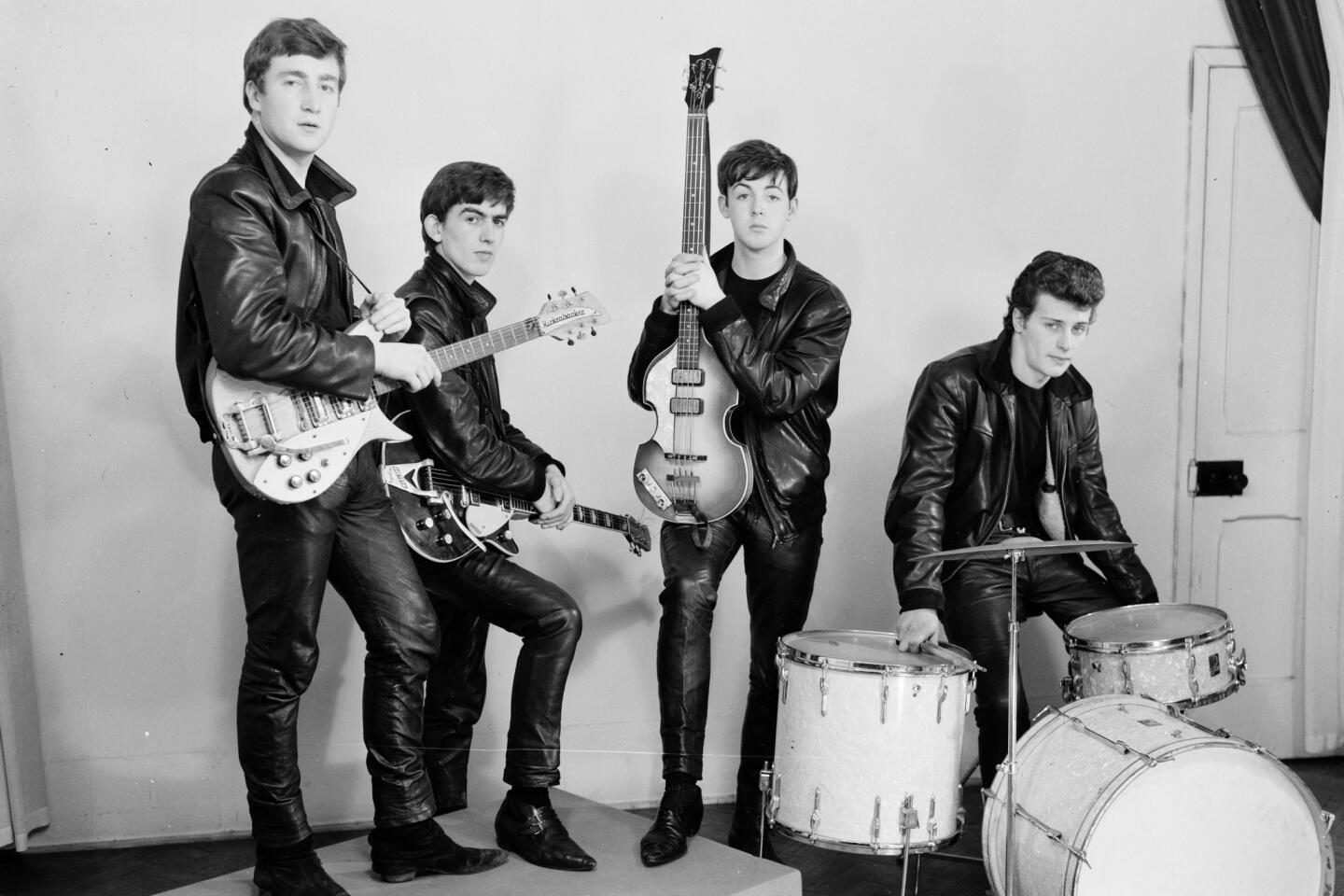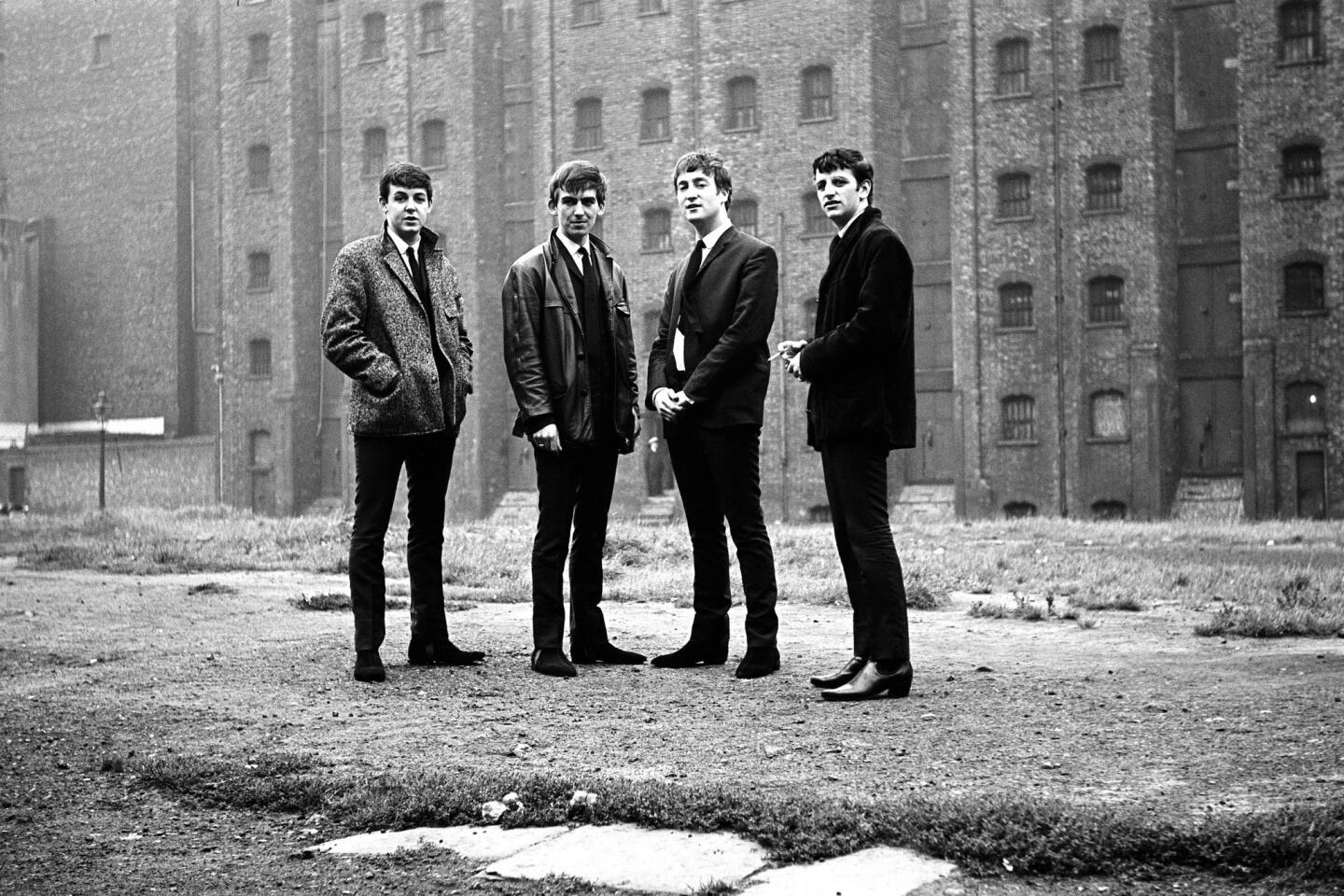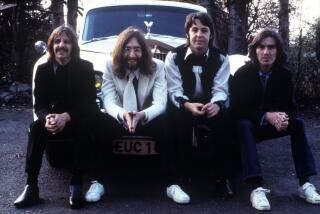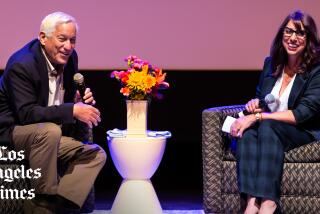Beatles authority says ‘Tune In’ for the real story
As a leading authority on the Beatles, researcher and author Mark Lewisohn is well aware that there have been far too many books written about the Fab Four. “In general terms and in biographical terms, I think the Beatles have been underserved by books,” he said.
Yet Lewisohn, 55, just contributed one more to the fray: the 944-page monster “Tune In: The Beatles: All These Years, Vol. 1” (Crown Archetype, $40). So what’s left to say after the hundreds of books, documentaries and fictionalized biographical dramas about the Beatles? A lot, according to Lewisohn, especially when it’s told accurately and with authority.
“Tune In” isn’t simply another book about the Beatles — it’s being received as the definitive account of the group’s storied history. In Lewisohn’s words, “a biographical history — not a rock biography.”
The London native spent the last 10 years researching and writing the first volume, which begins in 1845 with Liverpool during the age of John Lennon, Paul McCartney, George Harrison and Ringo Starr’s grandparents and takes the reader through 1962 as the foursome is poised to release its first recordings.
Two more volumes will cover the band from 1962 on.
Given the historical magnitude of the subject to which he’s devoted much of his life to, Lewisohn makes no apologies for the length of what he’s written, nor the lengths he went to into researching and writing it.
“It’s a story so fantastic you’d think it’s all been made up,” he said on a recent trip to Los Angeles from his home base near London. “But it’s all true and therefore the best story of all.”
Lewisohn, in fact, initially conceived of his grand-sweep exploration of the Beatles as a six-volume project — approaching Martin Gilbert’s celebrated eight-volume Winston Churchill biography — but his publisher convinced him that it would be too much of an uphill battle to market.
“I call this a biographical history,” said Lewisohn of the book, published Oct. 29. “It’s a biography with the Beatles at the center and everything else that’s happening around them. Initially, they were part of a world in which they were reacting to things around them, and when we get to volumes two and three, they’re very much shaping what’s going on around them.”
To capture the sense of urgency about what he’s taken on, he invoked a song title, and not of one of the more than 200 songs in the Beatles’ oeuvre but that of one of their biggest heroes: “It’s now or never.”
In previous books, Lewisohn documented the Beatles’ live performances (“The Beatles Live!” 1986) and their studio activity (“The Beatles Recording Sessions: The Official Abbey Road Studio Sessions Notes, 1962-1970,” 1988), for which he was granted unprecedented access to archival materials held by EMI Records and their Abbey Road studio where the Beatles made the vast majority of their records.
He also cataloged their professional and personal activities for “The Beatles Day by Day” in 1990 and synthesized what he’d gathered for those books added to it for “The Complete Beatles Chronicles” in 1992.
Along the way he’s worked for EMI in producing reissues and new collections of Beatles materials and spent 15 years as a consultant on a variety of projects for McCartney.
The Beatles themselves tend not to read — or at least comment publicly on — much of what’s written about them. But in his foreword to “The Complete Beatles Chronicles,” Beatles producer George Martin effused: “Of all the chroniclers who have studied the lives of John, Paul, George and Ringo, Mark Lewisohn stands supreme.”
PHOTOS: Paul McCartney gets a star on Hollywood’s Walk of Fame
Reviews of the new book have been generally positive with near-universal praise of Lewisohn’s research and most criticisms taking issue with Lewisohn’s writing style.
“He’s not a great stylist but he has written a game-changing study which raises the bar in a genre characterised by pap or pretension,” the UK Independent’s review said.
The Boston Globe’s review called his prose and musical judgment “shortcomings that put a drag on this weighty account.”
Entertainment Weekly awarded it an A rating, calling the book “spectacularly sourced and researched” and concluding: “The saga is clearer and richer here than it’s ever been.”
Rod Davis was a founding member of the Quarrymen, Lennon’s first band (it was Davis’ departure from the group that left an opening for McCartney). He recalled meeting Lewisohn nearly 30 years ago at a convention.
Davis was talking to someone about the time when McCartney first came to hear the Quarrymen. “A young man who was within earshot stepped up and said, ‘It was the 6th of July, 1957. My name is Mark Lewisohn,’ and he started telling us more than we remembered ourselves,” said Davis.
Chris Carter, host of “Breakfast With the Beatles,” America’s longest-running radio show devoted to the Beatles’ music, recalled preparing for a visit from Lewisohn once.
“I tried to have some Beatles rarities ready on the turntable, and he said to me, ‘You know, you’re so into the music. I’m really a document man,’” Carter said. “He’s a paper man. The paper trail can be very dry, but what makes him a great writer is being a document guy who knows how to tell a nice story and put it into a fun way to read it.”
By way of example, there’s the section in “Tune In” about Ivan Vaughan, a chum of Lennon’s who invited McCartney to come with him to check out the Quarrymen — a date enshrined in Beatles history as the day Paul met John.
Lewisohn adds detail to the oft-told tale through his own interviews and relentless sifting through documents such as newspaper reports, school records, report cards and other hard data concluding it was anything but random luck that Vaughan transferred to the school that McCartney and later George Harrison attended.
Lewisohn relates that Vaughan’s mother refused to send him to Quarry Bank, the school he otherwise would have attended, in an attempt to stop her son from associating with “that Lennon boy.”
“Tune In” adds new perspectives and corrects previously accepted inaccuracies about Lennon’s childhood being raised by his mother’s sister, Mimi, and reframes his rebellious attitude as well as his quick wit and intellectual acumen.
McCartney’s well-documented eagerness to please and impress all around him from an early age is fleshed out with multiple examples. His ability to multi-task — watching (and absorbing) what was on television at the same time he was doing homework — points at his later penchant for pulling together disparate musical ideas within the same song.
The prickly side of Harrison’s nature and his precociousness as the youngest Beatle also gain new vividness, while the depth of Starr’s youthful health struggles and loneliness become more apparent through Lewisohn’s telling of the story.
One lesson that comes through loud and clear in this first volume is that regardless of any style pointers manager Brian Epstein brought in once he signed on with the group, the Beatles and their success were in no way simply the product of savvy marketing.
Lewisohn said, “The Beatles we’d see publicly from 1963 and 1964 on, in Britain and the U.S., respectively, existed exactly the same before they were famous: the talent, the originality, the drive, the determination to move on whenever anybody was trying to copy them, the determination to not repeat themselves, to be original.
Gathering string on the band’s story has occupied more than half of Lewisohn’s life, whose introduction to the Beatles came through hearing their music in 1963 when he was 5, “and just realizing that it was magical,” he said. “It made me feel good. It made me feel excited, it made me feel happy.
“I wanted to sing it and I wanted to play it, and I wanted to find out more about who these people were, even then.”
[For the record, 8:37 a.m., Nov. 30: Earlier versions of some captions in the photo gallery accompanying this post incorrectly rendered the title of the Beatles biography as “All This Years.” The correct title is “All These Years.”]
Twitter: @RandyLewis2
More to Read
The biggest entertainment stories
Get our big stories about Hollywood, film, television, music, arts, culture and more right in your inbox as soon as they publish.
You may occasionally receive promotional content from the Los Angeles Times.












